Antioxidants are a must in your diet if you want to age in a healthy way. Their well-documented health benefits include slowing the effects of aging, which means they’ll help you feel younger for longer.
That’s why it’s so important to be consuming antioxidant rich foods on a regular basis. They feed your body at the cellular level and keep its protective defenses working full-force.
As study after study has been done on antioxidants, we have more insight into which foods contain the most. These top antioxidant foods on earth are little known to many people and may surprise you. Among these foods, there is lutein, a carotenoid found in green leafy vegetables, such as kale and spinach.
However, there are also plenty of more common foods high in antioxidants that can go right on your shopping list, as you’re about to see.
Here’s a closer look at the story behind antioxidants, why you need to be eating them, and which foods are the best.
The Superpower of Antioxidants
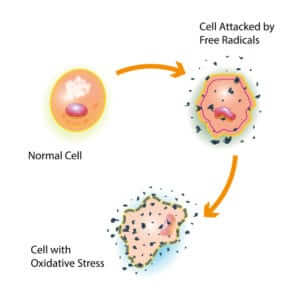
Antioxidants are anti-inflammatory and anti-aging powerhouses that have the ability to improve your overall health. They work in complex ways within your body but can best be summed up as free radical neutralizers.
Free radicals are unstable molecules that are always present within your body. They form from both normal processes occurring within your body and from outside stressors like chemicals in food, UV radiation, and environmental pollutants.
What makes free radicals harmful is their highly reactive nature. Basically, they end up “attacking” other molecules within your body, damaging them in the process.
This damage at the cellular level is often referred to as oxidative stress. Research indicates that the result of accumulated oxidative stress is accelerated aging, chronic inflammation, and a greater risk of many chronic diseases, such as heart disease.
While you can limit your exposure to external factors that cause free radical formation, antioxidants are the real key to halting their damaging effects.
The “superpower” of antioxidants is that they can donate an electron to free radicals, which essentially makes them harmless. Studies indicate that certain antioxidants may also prevent free radicals from forming in the first place.
When there is a balance of free radicals and antioxidants within your body, their harmful effects are minimal. When free radicals accumulate and/or antioxidant levels decrease, oxidative stress ensues and begins to take its toll.
This is why restoring antioxidant levels is so essential.
Moreover, a healthy metabolism is also crucial for maintaining balance in the body. Your metabolism is the set of chemical reactions that occur in your body to keep you alive and functioning, including the breakdown of food into energy. A sluggish metabolism can lead to a buildup of toxins and waste products in the body, which can increase oxidative stress and inflammation. By consuming antioxidant-rich foods and maintaining a healthy metabolism, you can help protect your cells from damage and slow down the effects of aging.
The Importance of Consuming Antioxidant Rich Foods
When it comes to restoring antioxidant levels, your body does manufacture certain antioxidants like glutathione and alpha lipoic acid. However, many other antioxidants are only found in external sources, such as certain types of nuts.
Vitamin C, for example, is an extremely powerful antioxidant that your body can’t manufacture. Yet it’s an incredibly important nutrient to slow skin aging and keep your immune system strong.
Quercetin is another antioxidant with many well-researched health benefits that’s found in certain plant foods. It doubles as a plant pigment, which means only plants manufacture it.
The list goes on and on, but you get the picture.
And while trying to get the bulk of your antioxidants from whole foods is always the best choice, a high-quality USDA Certified Organic antioxidant supplement may be helpful. NOTE, though, that many supplements also contain human-made antioxidants (aka synthetic) that may cause more harm than good.
Therefore, if you do choose to supplement, always look for those with naturally derived antioxidants. (My personal favorite by far is the USDA Certified Organic PaleoValley Organic Supergreens.)
How Is Antioxidant Content Measured? – The ORAC System

There are several ways the antioxidant capacity of food can be measured, but the ORAC value system has given us one of the most in-depth lists of antioxidant rich foods to date.
ORAC is short for Oxygen Radical Absorbance Capacity. It refers to a measurement that is determined in a lab by using samples of different foods.
The purpose of this method is to determine the total antioxidant capacity (or antioxidant activity) of each food. This is different from simply measuring how much of a certain antioxidant a food has.
To determine the ORAC value, a food sample is placed in a test tube with two types of molecules: those that generate free radical activity and those that are vulnerable to free radical activity. The food sample is scored by how well it protects the vulnerable molecules from oxidative damage.
The higher the score a food has, the higher its protective properties and total antioxidant capacity are.
Top 6 Highest Known Antioxidant Foods
Most of the foods that are highest in antioxidants won’t be found at your local grocery store. They come from all over the world and have some ridiculous ORAC values.
To give you a reference point, wild blueberries (which will make it on the list later) have an ORAC value of 9621. This is a very decent number, but the foods you’re about to hear about mostly score in the hundreds of thousands! And high antioxidant intake has been linked to a reduced risk of cancer and other chronic diseases.
#1- Coffee Cherries (ORAC Value: 343,900)
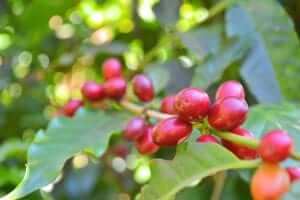
We’re all familiar with coffee beans, but have you ever heard of coffee cherries?
Coffee cherries (also called cascara) are the fruit that surrounds coffee beans. They may be the healthiest part of the plant given their incredibly high antioxidant content, but they are most often discarded in the process of harvesting the beans!
Due to the discovery of how rich in antioxidants coffee cherries are, some companies do now sell them in powdered form.
#2- Sumac (ORAC Value: 312,400)
Sumac is one of the most antioxidant rich foods on earth, but it’s still mostly popular only in the Middle East.
Technically considered a spice, sumac is made from the dried and ground berries of the sumac shrub (not to be confused with poisonous sumac). The result is a rich red powder that has a tart, lemony flavor.
If you’ve ever had the spice blend za’tar, sumac is a key ingredient in that.
#3- Indian Gooseberry (ORAC Value: 261,500)
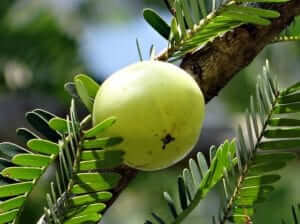
Also known as amla berries, Indian gooseberries are considered by some to be the highest antioxidant food in the world. This is because coffee cherries and sumac are powdered and used like spices rather than “true” foods.
Whichever way you look at it, these light green berries beat out many other super-berries, including acai, blueberries, and goji berries.
Indian gooseberries come from Asia and aren’t always available fresh in other parts of the world. However, you can consume them in powdered form, including in the staple Ayurvedic formula known as triphala.
(Also NOTE: Because of their incredible antioxidant content, feeding your skin Indian gooseberries can be exceptional for smoothing the appearance of wrinkles and giving skin a firmer, tighter, more youthful look. That’s why it’s one of the key ingredients in the bestselling Age-Defying Dream Cream over at Purity Woods!)
#4- Sorghum Bran (ORAC Value: 240,000)
Sorghum is a little known grain that is naturally gluten-free and high in protein. It can be made into flour, flakes, pearls that look similar to quinoa, and even a version of popcorn. A specific variety of sorghum is also used to make a delicious, rich syrup.
As far as antioxidant content, the highest value is found in the bran, which also happens to contain the most fiber.
#5- Baobab (ORAC Value: 140,000)
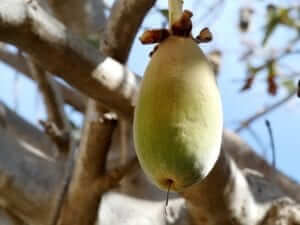
Baobab is a fascinating super-fruit that grows natively in Africa. The 6-8 inch brownish fruits hang from trees that have been nicknamed “monkey-bread tree,” “upside-down tree,” and even “dead rat tree.”
Not only is baobab fruit incredibly high in antioxidants, it’s also loaded with calcium, vitamin C, and B vitamins. The trees themselves are uniquely shaped, with fat trunks and an umbrella-like top. They’ve been known to live up to 1500 years!
Outside of Africa, you’ll mostly be able to find baobab as a fruit powder.
#6- Acai Berry (ORAC Value: 102,700)
Acai berries have already gained some fame as one of the top antioxidant rich foods. They’ve become especially popular in smoothies because of their antioxidant content and rich source of vitamins.
The berries come from palm trees native to Central and South America. They have a dark reddish-purple color. In fact, some of their most powerful antioxidants are the anthocyanins that also give them their coloring.
As acai has gained popularity, the berries have become more widely available. They are most often sold in frozen or dried form to retain their nutritional value.
Top 13 Common Foods That Are High in Antioxidants
Besides the top six standout antioxidant superfoods, there are many more commonly found foods that will add a good amount of antioxidants to your diet.
There’s currently no standard recommendation for an amount of antioxidants to consume each day, in part because there isn’t one standard measurement of antioxidant content yet.
However, there’s no indication that you can get too many antioxidants from food, so the more, the better!
#1- Dark Chocolate (ORAC Value: 20,816)

There are many health benefits of dark chocolate. These include not only a high antioxidant content (higher even than blueberries) but also a good source of essential minerals.
The ORAC value for your typical dark chocolate bar is high (20,816), but other forms of chocolate can give you even more antioxidants. Unsweetened cocoa powder has an ORAC score of 55,653 and unsweetened baking chocolate is right up there at 49,944.
To keep the highest possible amount of antioxidants intact, eat raw cacao powder or cacao products.
#2- Black Raspberries (ORAC Value: 19,200)
This isn’t the type of raspberry you’ll typically find in the grocery store, but you may be lucky enough to live in a region where they grow wild. These blackish berries with red tints are truly one of the best antioxidant rich foods with double the antioxidant content of blueberries.
Even if they aren’t native to your local area, black raspberries are easy to grow in a home garden.
#3- Pecans (ORAC Value: 17,940)
Pecans aren’t a fruit or vegetable, so it comes as a surprise to see them this far up on the antioxidant list. However, they are indeed packed full of antioxidants as well as healthy fats.
They’ve even been shown to raise the blood antioxidant levels of those who eat them daily.
#4- Wild Blueberries (ORAC Value: 9621)
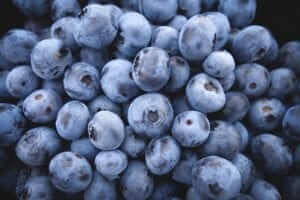
Blueberries used to be the biggest super-fruit before more exotic berries like acai and goji berries became popular. They still remain one of the best food sources of antioxidants and have the added benefit of being widely available.
If you have access to wild blueberries, they have nearly double the antioxidant content of commercially grown blueberries, which possess an ORAC value of 4669.
#5- Artichokes (ORAC Value: 9416)
Artichokes are one of the best vegetables you can eat to get a high amount of antioxidants. They contain a good amount of fiber and minerals as well. Boiling or steaming artichokes actually raises their antioxidant content, so try preparing them one of these ways.
#6- Cranberries (ORAC Value: 9090)
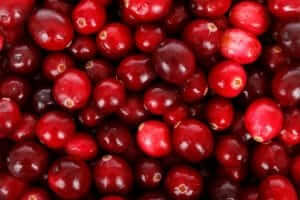
Raw cranberries are another of the top antioxidant rich foods, although they haven’t gotten much attention as a potential superfood. Perhaps they should be considered a super-fruit, since they are close to wild blueberries for antioxidant content and contain a high amount of vitamin C and minerals.
#7- Red Kidney & Black Beans (ORAC Values: 8606/8494)
Beans are another somewhat surprising source of antioxidants. Red kidney beans and black beans have the best antioxidant content with pinto beans not much further down the list at an ORAC value of 8033.
#8- Prunes (ORAC Value: 8059)
Known for possessing fiber that can relieve constipation, prunes are also something of a dried superfood. They have a very high antioxidant content and contain a good amount of potassium, vitamin K, vitamin A, and iron. Just one or two a day goes a long way!
#9- Blackberries (ORAC Value: 5905)
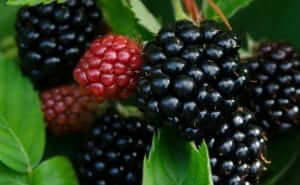
As you can see, berries are arguably the most prevalent source of antioxidants. Blackberries have a lower content than wild black raspberries, but their antioxidant content is still quite high, and they are much easier to find at the store.
#10- Red Raspberries (ORAC Value: 5065)
Red raspberries come in right behind blackberries as far as antioxidant content. This could be due to their different coloring, since both black raspberries and blackberries have antioxidants related to their dark black-purple pigments.
#11- Almonds (ORAC Value: 4454)
Almonds are a very healthy food with a high amount of antioxidants, fiber, protein, vitamin E, magnesium, and manganese. They even have the power to make you feel full for longer, decreasing your overall calorie intake.
#12- Goji Berries (ORAC Value: 4310)
Also known as wolfberries, goji berries are considered by many to be a superfood. They are an excellent source of antioxidants, although their content isn’t as high as other berries on this list. However, they also have over 500% the recommended daily value (DV) of vitamin A and a good amount of vitamin C and iron.
#13- Strawberries (ORAC Value: 4302)
Rounding out the list of antioxidant rich foods is the “common” strawberry. This everyday fruit is rich in vitamin C and manganese along with folate and potassium. It’s an excellent source of antioxidants and easy to find in stores or grow yourself.
Other foods that are high in antioxidants include:
Red grapes, spinach, oranges, turnip greens, lemons, broccoli, kale, Brussels sprouts, beet greens, collard greens, tomatoes, garlic, ginger, green tea, limes, cabbage, and bell peppers.
Bonus: Top Antioxidant Herbs & Spices
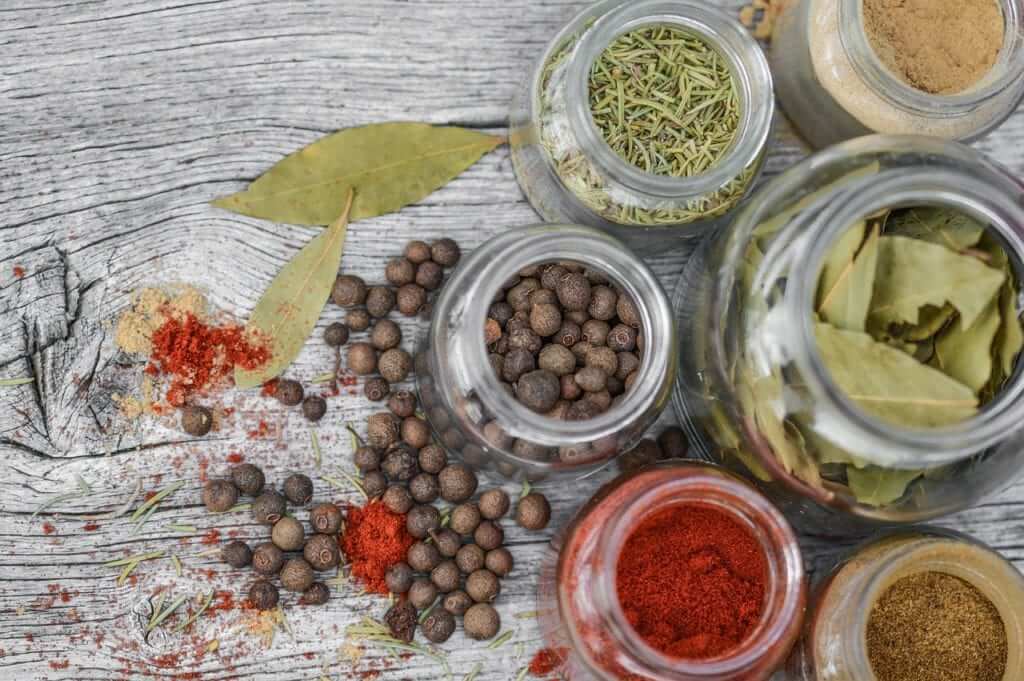
Herbs and spices are some of the most potent sources of antioxidants. They hold many of the top spots on the ORAC list, though they aren’t technically considered foods.
Here’s a quick look at the top 15:
- Cloves (ORAC Value 290,283)
- Oregano (ORAC Value 175,295)
- Rosemary (ORAC Value 165,280)
- Peppermint (ORAC Value 160,820)
- Thyme (ORAC Value 157,380)
- Cinnamon (ORAC Value 131,420)
- Turmeric (ORAC Value 127,068)
- Vanilla Bean (ORAC Value 122,400)
- Sage (ORAC Value 119,929)
- Allspice (ORAC Value 100,400)
- Rose Hips (ORAC Value 96,150)
- Marjoram (ORAC Value 92,310)
- Parsley (ORAC Value 73,670)
- Gotu Kola (ORAC Value 69,978
- Nutmeg (ORAC Value 69,640)
Top Supplement Recommendation
 Now that you know more about the most antioxidant-rich foods that nature provides, all that’s left is to add a variety to your diet. Of course, some days that’s easier said than done, especially since so many of the ingredients with the highest concentration are harder to come by. That’s where Amla Green can help.
Now that you know more about the most antioxidant-rich foods that nature provides, all that’s left is to add a variety to your diet. Of course, some days that’s easier said than done, especially since so many of the ingredients with the highest concentration are harder to come by. That’s where Amla Green can help.
Amla Green’s 100% organic amla-infused coffees and teas are a delicious and easy way to get your daily dose of amla. These smooth, flavorful beverages contain highly concentrated organic amla berry powder combined with other powerful medicinal plants, such as oolong tea, hibiscus, elderberries, mint, ginger, cinnamon, and arabica coffee beans.
So, whether you want to kickstart your day with renewed energy and focus, enjoy a calming midday break without the caffeine jitters, or wind down with a caffeine-free tea before bedtime, Amla Green has you covered.
Many people notice enhanced energy and well-being within just two weeks of incorporating Amla Green into their routine. With consistent use, you may also see in blood pressure, fasting blood sugar levels, and improvements in overall cholesterol profiles (total, LDL, HDL, and triglycerides).
Look into Amla Green right here and discover how to sip your way to better health!

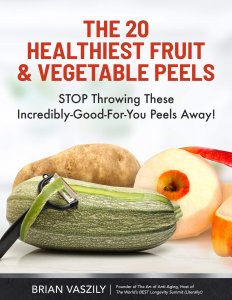

excellent article.
Very informative! Thank you,
Excellent article.Thank you.
Best info so far of basic information!
Thank you for this list Brian–I appreciate all the information you send out!
Marilyn
San Diego
Vital info for better health. Thank you this helpful information.
Thank you for the pertinent information. Much appreciated.
Hello,
I enjoy reading your messages they are interesting. Now I know why I’m in good health.
I eat all of those you write here, but not Gotu Kola.
Thanks you:)
Great article thanks .
I truly believe in Herbal foods and use many of them daily. I grow a herb garden and use Sweet Basil, Oregano, and occasionally Rosemary. I live in South Africa so do not grow the berries that are spoken of in this article. Thank you for all your information.
Thank you for your teaching
OMGoodness! This article is packed with knowledge/research!! I’ve learned a lot from you and I really thought I knew this… but for sure there’s still so much to learn. I appreciate you more than I can express. Thank you ‘berry’ much! Couldn’t pass that up when I saw your rude berry joke!! :).
THANK YOU BRIAN!
Thanks Brian.
Very helpful!
Very good info and advice., thanks a lot Brian. I normally spend half my life in NZ, the other half in S E Asia so not all those products are readily available but I will look harder for them.
Wow this was very informative and easy to read! Thank you!
Very good!!!!!!
Raw cranberries on are the list – which is lovely since I’m a fan of cranberries and they happen to to be a regional crop. What happens to the nutrient content when cranberries are cooked?
Thanks!
Thank you, great info a keeper for my files.
Thank you for this information. I am really am trying to boost my immune system and this will certainly help. E. Bennett
Very informative article about antioxidants. Natural foods described in the above article are best for our body and are easily accepted by our body. GOOD advice for GOOD health.
Thank you and thank you again . These informations are precious to me. I don’t leave me remarks because of my english . Most of the time I want to say something, but I don’t Know how to say it right. Bryan I want you to know your jokes do make smile, I laugh. I enjoy them .
Thanks for a fine article.This is the way to better health.
Thank you Brian for your efforts and hard work in getting these information out to people. Much appreciated.
Well written, wonderfully synthesizing, “Potent” article! Thank You!! I feel better just reading it – m a y b e cause I consume a good bit of these… I wondered about the relevance of my tea drinking – alas, in here is the answer. Sent to 22 people in 3 minutes, hope that does not explode geometrically and shut down your site….
Thank you, Brian, for all of this wonderful information. It is very educational.
As always, you bring the best of the best information to the forefront. Outstanding!!
Thanks Brian, Very much appreciated !
Great Info, Thanks, I only wish that I could share it.
So many of my questions answered in a simple way! Gratitude!!! Laurentians, Québec
Thank you for this wonderful article. Is packed with life’s vital information for healthy eating
As always, great information. Thank you
Hi Thank You
This is very easy to understand.
Information of this nature is Health For Entire Humanity during this pandemic times.
Once again, very interesting and informative.
Thank you for this life boosting article.
Thanks for the info. It is greatly appreciated
Excellent information!
Goose berries! Now that’s exciting 🙂 A great read as well! TY
An excellent Article which can easily be used as a starting point for those who want to start to eat healthier. I wish the powers that be who run our countries, bought advertising time around the most popular viewed TV shows to continually show parts of this article so large parts of the population are educated and reminded what these foods do for us and our health. I think better decisions would then be made when out shopping for groceries and would save billions on healthcare and also save lives.
Thank You, great Article….very Informative and useful
This was very informative. Thank you
Thank you for the great article.
The info you give helps us make healthy choices.
As always, well researched and easy to read. I’m always looking to find quick and easy ways to amp up the nutritional value of the food I prepare at home and you always deliver! Sumac is a favorite spice of mine — has the taste effect of a squeeze of lemon on a dish. Thanks!
I’m wondering about the raw cranberries since the only way I know of people eat them raw is perhaps in a relish. Is there much antioxidant content left after cooking? Are they cooked when making cranberry juice or are they just pressed? Perhaps different juices are made differently.
Excellent information backed by science . Love all your articles and summits that you put together. Sharing so much pertinent information with the community. That’s service indeed !!
You are so much appreciated.
Thank you for all the wonderful information that you share and for all that you do, much appreciated.
God bless you and your family
very good information!
one berry you forgot about…………”.HASKAP” BERRY has 5x the antioxidants of blue berry…….sorry it doesn’t care for warm climates as it is a native of northern China and Siberia
but now being grown in Canada. in colder winter areas.
I take most of the anti oxidant foods in my food and our Indian Cooking includes a lot of items mentioned above – but our way of cooking may be reducing the amount of antioxidants .
But I still feel troubled by knee joint arthritis and backache – I am 83 and healthy otherwise .
I listen to a lot of music and meditation music that keeps me going .
Very much pertinent information, sir. Thank you so much from the bottom of my heart. 😀
I come from a country where coffee beans are one of the major exports and am amazed that coffee cherry tops the list.
Very Informative.I appreciate it.
so informative….help nature to help..go vegies and protect your body from many types of inflammations.God bless for this great info
Hi Brian,
Thanks for the information on so many beautiful herbs.
If only summer would begin sometime soon.
Thanks for your list!
Darby
excellent!!!
Good information, but I think you left out a very high value Orac food. Moringa has an Orac value of 157,000 umoles. This is higher than Acai Berry.
Wonderful information, Brian! Thank you so very much for sharing your knowledge.